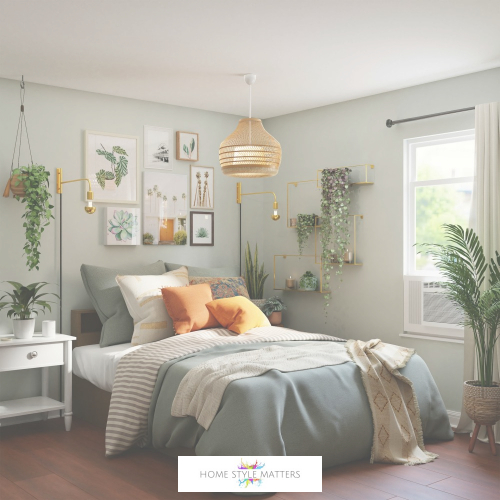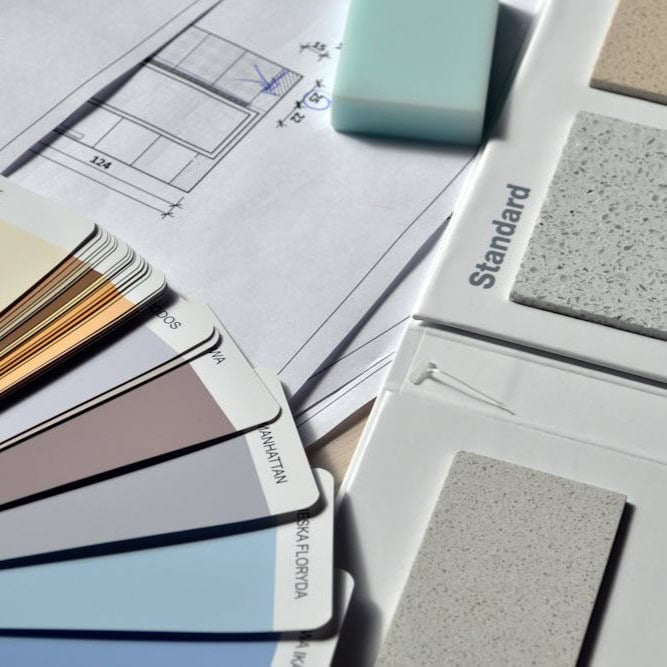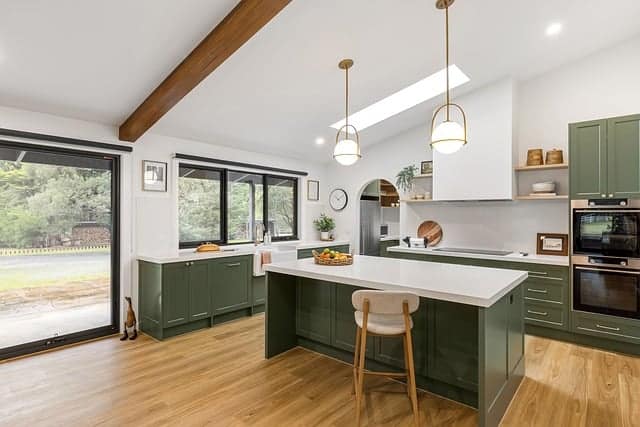
Kitchen Island or Peninsula – What is Best for You?
Table of Contents
The kitchen Island or Peninsula, when it comes to kitchen design, the battle lines are drawn between two formidable contenders. What is the key differences and what makes one configuration better than the other? Is it simply a matter of personal preference or does each open space layout serve distinct purposes that appeal to different lifestyles? Choosing between a kitchen island and a peninsula depends on several factors such as space, functionality, style, and personal preference. Here’s a breakdown of the pros and cons of each option:
Kitchen Island
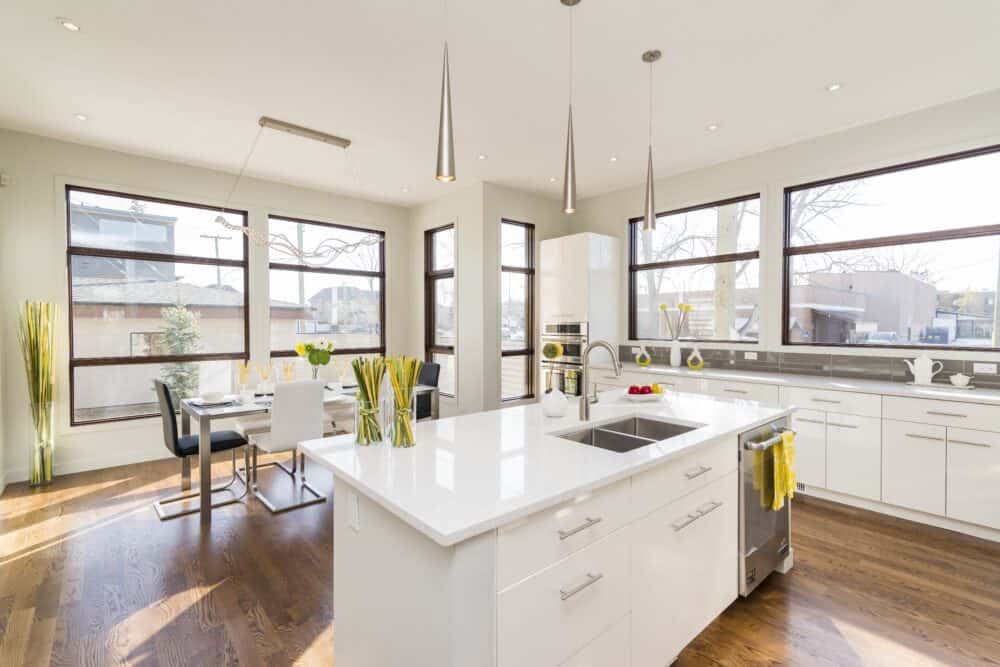
In the world of kitchen design, the kitchen Island stands out as a multifunctional centerpiece that transforms ordinary cooking spaces into a social haven. A sleek slab of marble or butcher block, surrounded by family and friends, where meals are prepped, memories are made, and lively conversations flow like fine wine. The kitchen Island is much more than just an additional counter; it serves as a gathering spot that enhances both the social aspect of dining and the practicality of meal preparation.
But what exactly defines a kitchen Island? Let us explore its various forms—from simple surfaces to elaborate structures equipped with sinks and appliances or seating areas—and uncover how they can elevate your kitchen’s design while maximizing space efficiency. If you are contemplating a kitchen renovation or simply curious about current trends in home decor, understand how a dream kitchen island could reimagine your kitchen area in innovative ways.
Pros
More Workspace: Islands provide extra countertop space for food preparation, cooking, or even as a dining area.
Versatile Layout: An Island can host a better fit for a cooktop, sink, or appliances, freeing up other counter space.
360° Access: Since it’s centrally located, you can access all sides, making it functional from any angle.
Enhanced Socialization: It acts as a hub, allowing people to gather around it without interrupting the cook’s workflow.
Design Flexibility: Islands can have multiple purposes—storage, seating, cooking space—and they come in various shapes and sizes.
Style Appeal: Islands often serve as the focal point of the kitchen, adding a modern and luxurious touch.
Cons
Requires More Space: To maintain proper circulation, you need significant space around the island (about 3-4 feet clearance).
Higher Cost: Islands can be expensive to install, especially if they include plumbing or electrical work for sinks or appliances.
Challenging in Small Kitchens: In smaller spaces, an Island can make the kitchen feel cramped or interrupt the workflow.
May Create Congestion: In high-traffic kitchens, an Island can disrupt the flow of movement.
Kitchen Peninsula
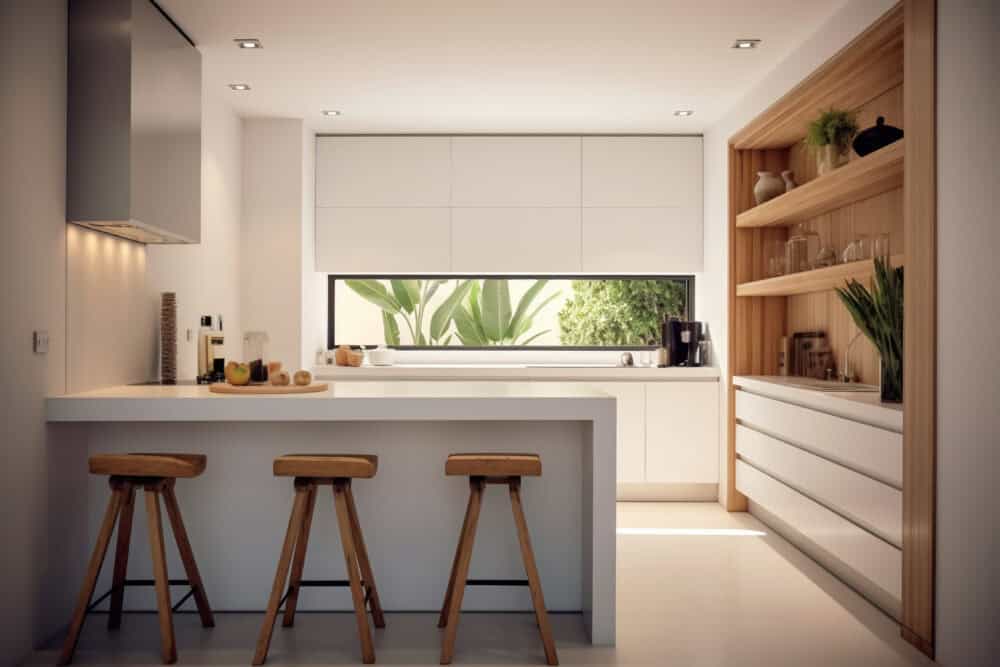
At the heart of this inviting space often lies a kitchen Peninsula—a versatile architectural element that not only enhances the layout and appeal but also transforms how we interact with our cooking environment. In kitchen design, the Peninsula stands out as a solution for maximizing space, creating flow, and fostering connections among family and friends.
Whether you’re an avid home chef or simply someone who enjoys gathering around good food, understanding what a kitchen Peninsula can offer is essential. This clever configuration provides additional prep space while serving as a casual dining area or social hub. As we explore the ins and outs of space — from layout possibilities to practical benefits and extra counter space—you’ll discover that a Peninsula is similar to an Island but is attached to a wall or cabinet, forming unique features of either an “L” or “U” shape.
Pros
Great for Smaller Kitchens: Peninsulas work well in tighter spaces since they don’t require as much clearance on all sides like an island.
Efficient Use of Space: It maximizes the available counter space without occupying the center of the room, which is great for compact kitchens.
Cost-Effective: Generally, Peninsulas are more affordable to install because they don’t typically require as much additional electrical or plumbing work.
Defined Space: A Peninsula can create a natural boundary between the kitchen and an adjacent room, making the area feel more organized or separate.
Increases Seating: Similar to an island, it can serve as a breakfast bar or additional seating without the need for more square footage.
Improves Workflow: Since it’s attached, a Peninsula can help create an efficient kitchen work triangle (sink, stove, refrigerator).
Cons
Limited Access: A Peninsula only offers access from three sides, which can make it less convenient for large groups or certain kitchen tasks.
Less Modern Appearance: Some homeowners feel that Peninsulas look more dated compared to the open, modern look of an island.
Creates Barriers: It can act as a physical barrier, limiting flow between the kitchen and adjacent spaces like the dining room.
Potential Bottleneck: If people gather around the Peninsula, it can create congestion in the kitchen, especially near the entry points.
When to Choose a Kitchen Island
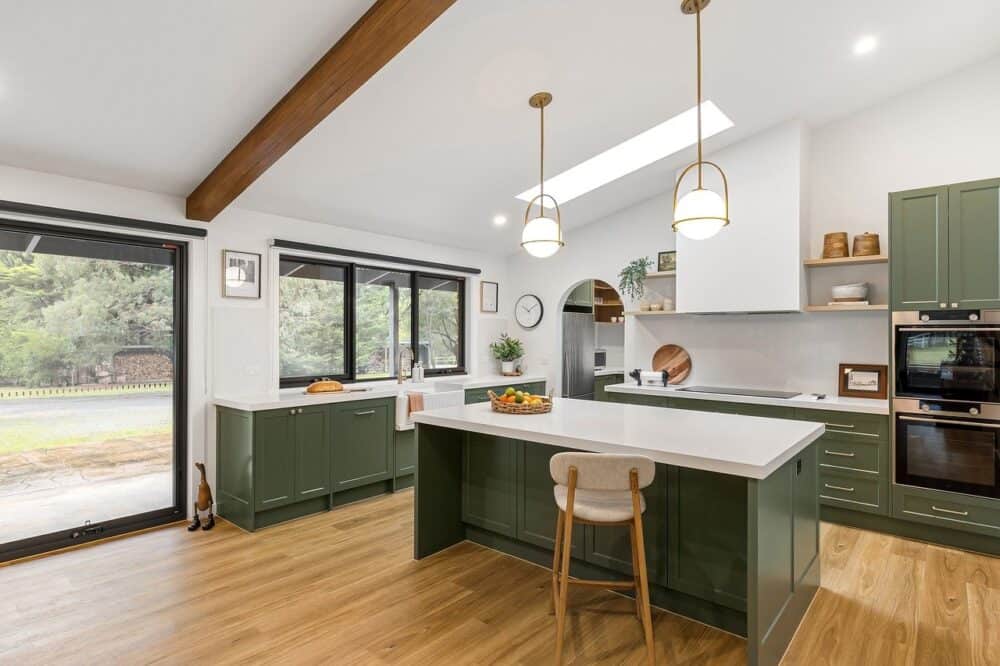
- You have a large, open floor plan kitchen.
- You want more multi-sided access for seating space or cooking.
- You have a modern kitchen so looking for a luxurious focal point.
- You need extra workspace or additional storage.
When to Choose a Kitchen Peninsula

- You have a small kitchen size or a galley layout.
- You want to maximize countertop work areas and storage space without sacrificing square footage.
- You need a cost-effective solution.
- You prefer a more enclosed or separated kitchen layout.
Conclusion
Choosing between a Kitchen Island and a Peninsula ultimately depends on your specific needs, space limitations, and lifestyle preferences. Both options offer unique benefits but ultimately, the best choice will harmonize with your kitchen’s layout and enhance your cooking experience.


